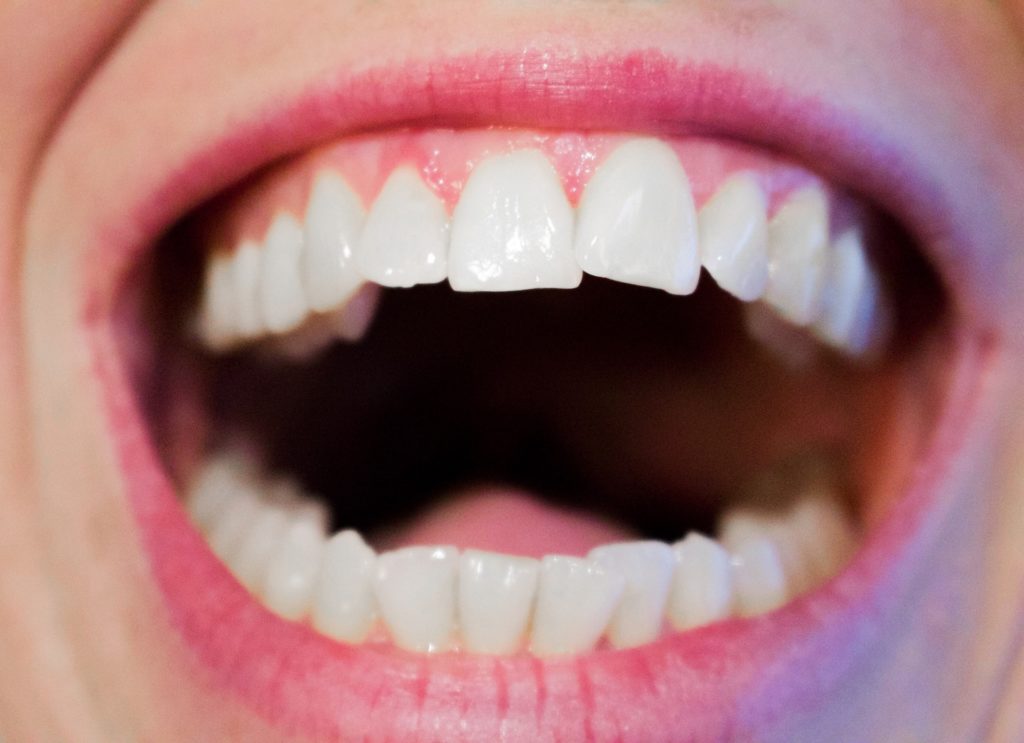
Kelley Carter – MS, CCC-SLP
Certified Orofacial Myologist COM(trademark). Less than 260 in the world.

What are Orofacial Myofunctional Disorder (OMDs)?
Orofacial Myofunctional Disorders are atypical, adaptive patterns that emerge in the absence of normalized patterns within the orofacial complex. The regular presence of these adaptive movements can often result in a variety of disturbances.
Examples of Orofacial Myofunctional Disorders include one or a combination of the following:
-
- Thumb and finger sucking habits
- A routine habit of resting with the lips apart
- A forward resting posture of the tongue between or against the teeth
- Tongue Thrust
- Other harmful oral habits
Orofacial Myofunctional Disorders are often related to, or can contribute to a variety of medical and dental disorders. These disorders can include:
-
-
- Malocclusion (improper alignment of the teeth)
- Periodontal disorders
- Orthodontic relapse
- Changes associated with abnormal jaw growth and position
-
What are some of the causes of Orofacial Myofunctional Disorders?
It is often difficult to isolate a particular source as the sole cause of an Orofacial Myofunctional Disorder and in most cases, it can be result of a combination of factors. Many experts suggest that OMDs may develop as a result from the following:
A restricted nasal airway due to enlarged tonsils/adenoids, deviated septum, and/or allergies.
- Improper oral habits such as thumb or finger sucking, cheek/nail/cuticle biting, teeth clenching/grinding, and tongue, lip or cheek sucking
- Extended use of a pacifier and/or long-term use of sippy cups
- Structural or physiological abnormalities which may include a short lingual frenum (tongue-tie)
- Neurological deficits and developmental delays
- Hereditary predisposition
The most commonly noted etiology of an OMD is a lack of nasal breathing. When nasal breathing is impeded, the body naturally accommodates by relying on mouth breathing. Long-term mouth breathing changes the natural resting position of the jaw, tongue and lips. This change in position can influence growth patterns of the jaw and maxilla and often result in the development of significant malocclusion. Furthermore, long term mouth breathing compromises the natural process of breathing which relies on the nasal airway to cleanse and purify air for the pulmonary system.
It is crucial to first address what may be contributing to the persistence of an Orofacial Myofunctional Disorder before beginning treatment, as treatment may not be successful if the etiology persists. A Certified Orofacial Myologist can help you to determine what may be contributing to its presence, and can help refer you to the appropriate clinicians to address these concerns.
While a lips apart resting posture is often a result of nasal airway obstruction, once the airway obstruction is corrected the lips-apart pattern remains a persistent habit that must further be addressed
Why be concerned about OMDs?
Orofacial Myofunctional Disorders interrupt normalized movement patterns. Orthodontists have documented their concerns about OMD’s since the early 1900’s. Failure to address an OMD can result in:
-
- Long term mouth-breathing patterns that compromise overall healthy breathing
- Establishment of detrimental oral habits that impede further growth and development
- Establishment of atypical patterns that impact chewing and swallowing
- The improper development/alignment of the teeth
- The improper development of jaw growth and facial structure
- Slowing the process of orthodontic treatment
- Undermining the long-term stability of orthodontic treatment, resulting in malocclusion relapse
- Negatively impacting the stability and function of the temporomandibular joint (TMJ)
- Speech distortions
- Negatively affecting social relationships due to open mouth postures or noisy chewing and swallowing patterns
A variety of peripheral pain issues like chronic facial, neck and back pain; headaches; tooth grinding and clenching; as well as temperomandibular joint dysfunction (TMJD or TMD) have also been associated with OMD’s, as have episodes of tinnitus and vertigo.
Improper tongue position has also been associated with some sleep disordered breathing patterns.
Many individuals with OMD’s have been reported to have early delays in the area of feeding and swallowing. Picky eating patterns often emerge as a result of the lack of oral coordination needed in the first three years of life. Since OMD’s are typically associated with jaw, tongue and lip movement, speech patterns can also be impacted.
The normalized patterns of proper tongue, lips and jaw postures are crucial to facilitating normal growth and the overall development of the orofacial structural and musculature systems.
What age should therapy begin?
Therapy for orofacial myofunctional disorders can begin at variable ages.
-
- Children as young as 4 years of age can benefit from an evaluation to determine if causative factors such as an inability to breathe nasally consistently or a tongue tie would require prevention and/or intervention, and would allow the clinician to make appropriate referrals to professionals for remediation.
- Children of 5 years of age are at an ideal time to begin a program to help eliminate harmful sucking habits
- Children of seven to eight years of age are good candidates to begin an Orofacial Myofunctional Therapy program.
- Teens and Adults of all ages are also able to achieve successful, long-term results.
How effective is Orofacial Myofunctional Therapy?
There are many factors that contribute to the success of the therapy program. Effective communication and cooperation between therapist and the dental and medical community is essential. In addition, the patient’s desire, dedicated cooperation and self-discipline are necessary, as well as support from others. To ensure optimum results with children undergoing therapy, parental involvement and encouragement is important and necessary.
Orofacial Myofunctional Therapy has helped thousands of individuals in dozens of countries. Numerous studies have demonstrated its effectiveness in the treatment of Orofacial Myofunctional Disorders. These studies have shown that Orofacial Myofunctional Therapy can be 80-90% effective in correcting rest posture, swallowing and other oral functions, and that these corrections are retained years after completing therapy.
What Can Orofacial Myofunctional Therapy Accomplish?
Orofacial Myofunctional Therapy involves an individualized program to help the patient retrain these adaptive patterns of muscle function, and to create and maintain a healthy orofacial environment. Treatment goals may include the following:
-
- Normalize tongue and lip resting postures
- Establish nasal breathing patterns
- Eliminate improper chewing and swallowing patterns
- Stabilize the dentition from extraneous orofacial muscle movement
Address harmful oral habits including:
-
-
- Prolonged pacifier use
- Thumb and/or finger sucking
- Fingernail, cheek, or lip biting
- Tongue sucking
- Clenching or grinding of the teeth
-
Benefits of Orofacial Myofunctional Therapy may include:
-
- Correcting and improving tongue and lip postures which can aid in the development of normal patterns of dental eruption and alignment.
- Assisting in the stabilization of the teeth during and/or after orthodontic treatment or jaw surgery
- Identifying the need and referring for Speech treatment. Supporting the remediation of speech errors differently than some traditional methods (when working with a speech language pathologist trained in Orofacial Myology).
Benefits for patients of all ages, including adults:
- Decreases the need for costly orthodontic appliances
- Assists orthodontists in reducing time and money with traditional braces
- Results in proper muscle function bringing teeth into a more desirable relationship and stabilizing occlusion
- Patients gain confidence after completed program, a sense of accomplishment
- Correcting or improving resting tongue or lip relationships can be instrumental in aiding the development of normal patterns of dental eruption and alignment, or restoring normal processes of orofacial growth and development.
- Therapy programs are designed to retrain patterns of muscle function and to aid in the creation and maintenance of a healthy, stable orofacial environment.
- Improves the clarity of speech
- Enhances one’s appearance
- Helps to maintain optimum oral health for a lifetime of benefits
Success Rates:
- Studies have shown that treatment for OMDs (orofacial myofunctional disorders) can be 80-90% effective in correcting swallowing and rest posture functions. These corrections are usually maintained years after completing therapy.
Myofunctional Therapy to Improve Sleep Apnea
Information About OMD
Treatment is often a collaborative process with a variety of medical and dental specialists. A Certified Orofacial Myologist can help you determine what may be contributing to the presence of an OMD, and can help refer you to the appropriate clinicians to address these concerns.